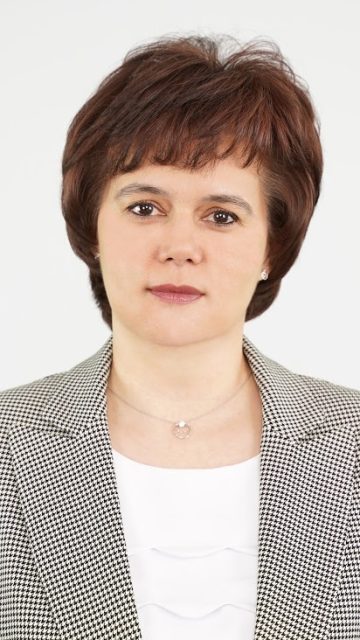Environmental characteristics of economic dynamics in the Northwestern Federal District of Russia

Elena A. Tretiakova
Doctor of Economics, Professor
Department of World and Regional Economy, Economic Theory, Perm State University
Perm, Russia
Doctor of Economics, Professor
Department of Management, Higher School of Economics
Perm, Russia
The global trend toward sustainable development involves reducing the environmental load in all countries through the use of new, less environmentally intensive technologies. The Baltic region countries are making significant efforts to reduce environmental pollution and have already achieved some success in combating climate change. Russia adjoins the Baltic region countries with the territory of its North-Western Federal District (NWFD), therefore, close attention was paid to it when assessing the environmental consequences of economic dynamics for the period 2015-2020.
The NWFD includes 11 subjects of the Russian Federation: the Republic of Karelia, the Komi Republic, the Arkhangelsk Region, the Nenets Autonomous Area, the Vologda Region, the Kaliningrad Region, the Leningrad Region, the Murmansk Region, the Novgorod Region, the Pskov Region and St. Petersburg city. Its total area is 1,687 thousand square kilometers, the population is about 14 million people, and the population density is about 8.3 people per 1 square kilometer.
The gross regional product (GRP) in the NWFD in constant prices increased by 2.7%: from 7205 billion rubles in 2015 to 7403 billion rubles in 2020[i]. Economic growth was observed in most subjects of the NWFD, except for the Republic of Karelia (-0.9%), the Komi Republic (-8.8%), the Nenets Autonomous Area (-0.7%) and the Vologda Region (-0.7%). In general, the positive economic dynamics in the NWFD was accompanied by various environmental effects in the condition of the air, water resources and waste generation.
Atmospheric air: There have been no cities with high atmospheric air pollution in the NWFD in recent years. The total volume of pollutant emissions in 2020 was 2080.2 thousand tons, which is 40.6% lower than in 2015. At the same time, emissions from stationary sources decreased by 23.0%, and emissions from mobile sources (road and rail transport) fell by 68.2%. It should be noted that the KOVID-19 pandemic contributed to the reduction of this type of environmental load: emissions from mobile sources decreased from 1,422.2 thousand tons in 2018 to 451.1 thousand tons in 2019 and 432.5 thousand tons in 2020. Accordingly, the environmental intensity in terms of atmospheric air pollution fell by 42.2%: from 0.49 to 0.28 tons per million rubles of GRP. Decrease of ecological load and ecological intensity was observed in all subjects of NWFD of Russia. Thus, the environmental dynamics with regard to atmospheric air in the NWFD can be characterized as “green”.
Water resources: In 2020, 584.5 million cubic meters of fresh water were withdrawn from natural water reservoirs, which is 7.0% higher than in 2015. About 80% of water was used for production needs. At the same time, the volume of recycled and consistent water increased by 11.4%: from 827.6 to 921.9 million cubic meters, indicating an increase in the circularity of the NWFD economy with relation to water use. Ecological load in the form of discharge of polluted sewage decreased by 14,9 %: from 2637,0 to 2245,3 million cubic meters. Environmental intensity fell from 0.04 to 0.03 million cubic meters per 100 million rubles of GRP. Thus, the environmental dynamics in the NWFD with reference to water resources in general can be characterized as “green”. The exception is the Republic of Komi, where the economic reduction was combined with the growth of environmental load and ecological intensity. Here the discharge of polluted wastewater increased from 117.0 to 171.1 million cubic meters. At the same time it increased from 0.2 to 0.4 million cubic meters per 100 million rubles of GRP. Therefore, the economic dynamics in the Komi Republic is characterized as a “black recession”.
Waste: In 2020, the total volume of waste generation in the whole NWFD was 150189 million tons, which is 30.3% higher than in 2015. The growth of the environmental load, exceeding the growth of the gross product has caused an increase in environmental intensity. In 2015 there were 6.1 tons of wastes per 100 million rubles of GRP, and in 2020 – already 7.7 tons. About 50% of waste is disposed of and about 40% is stored. Less than 15 % of waste is utilized and neutralized. In general, the economic dynamics in relation to waste in NWFD is characterized as “black”. The exceptions are the Novgorod Region, where there was a “green” economic dynamics due to a threefold reduction in waste generation, and the Arkhangelsk Region due to a twofold reduction in waste generation. The main reason for this positive environmental trend was the deterioration of the economic situation. The volume of production in the mining sector in the Arkhangelsk Region and in the manufacturing industry in the Novgorod Region decreased sharply due to the difficult epidemiological situation.
Thus, the environmental conditions in NWFD of Russia are characterized by positive changes with regard to the protection of atmospheric air and water use and negative – with regard to waste generation. The urgency of the waste management problem requires the Russian government to create institutional conditions conducive to the creation of a waste recycling industry and encouraging the widespread use of best practices in this area.
[i] Due to the lack of official statistical data on the GRP volume index in the Russian regions for 2020, the GDP volume index for 2020 was used in the calculations.
Expert article 3190
>Back to Baltic Rim Economies 1/2022
To receive the Baltic Rim Economies review free of charge, you may register to the mailing list.
The review is published 4-6 times a year.
